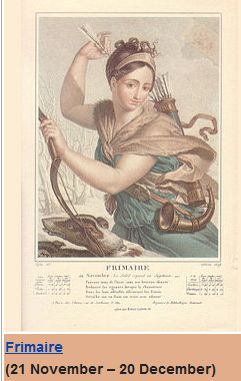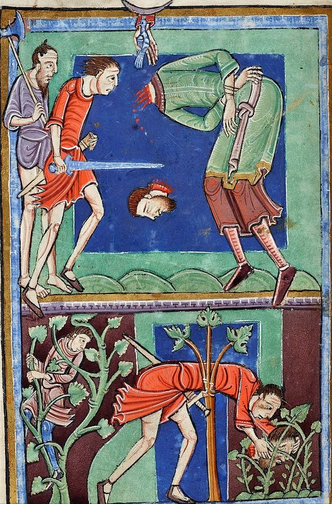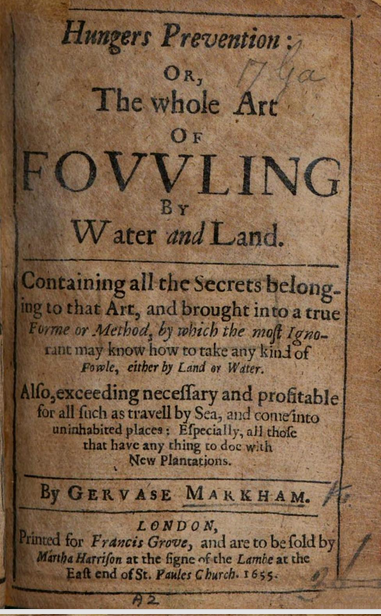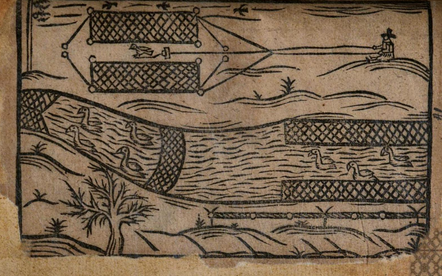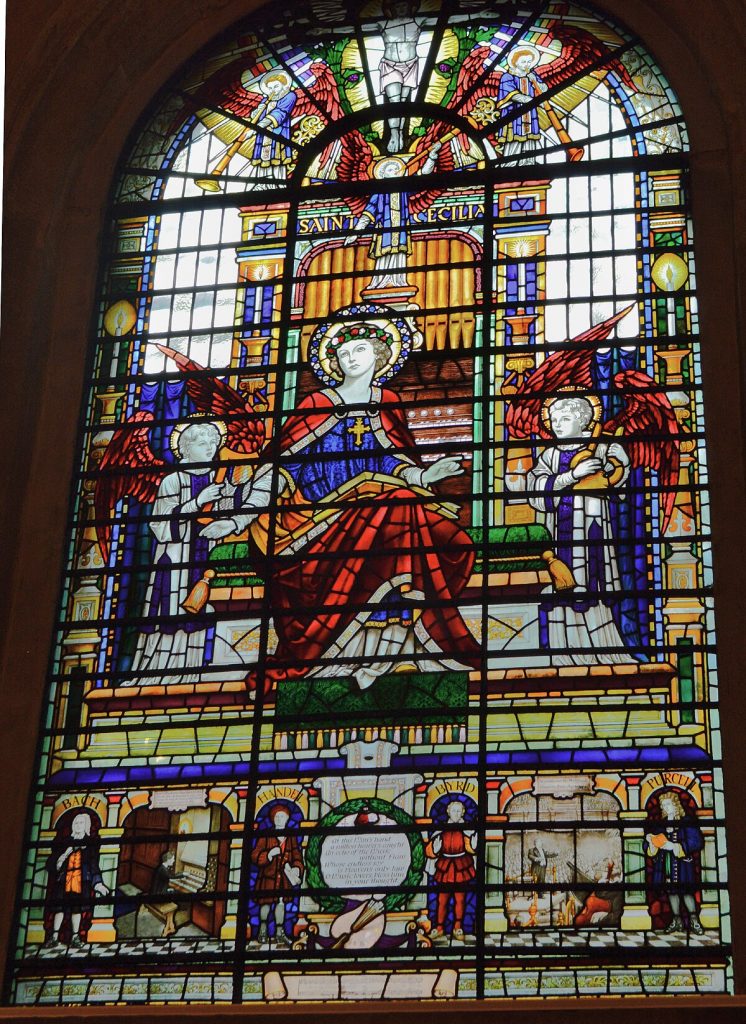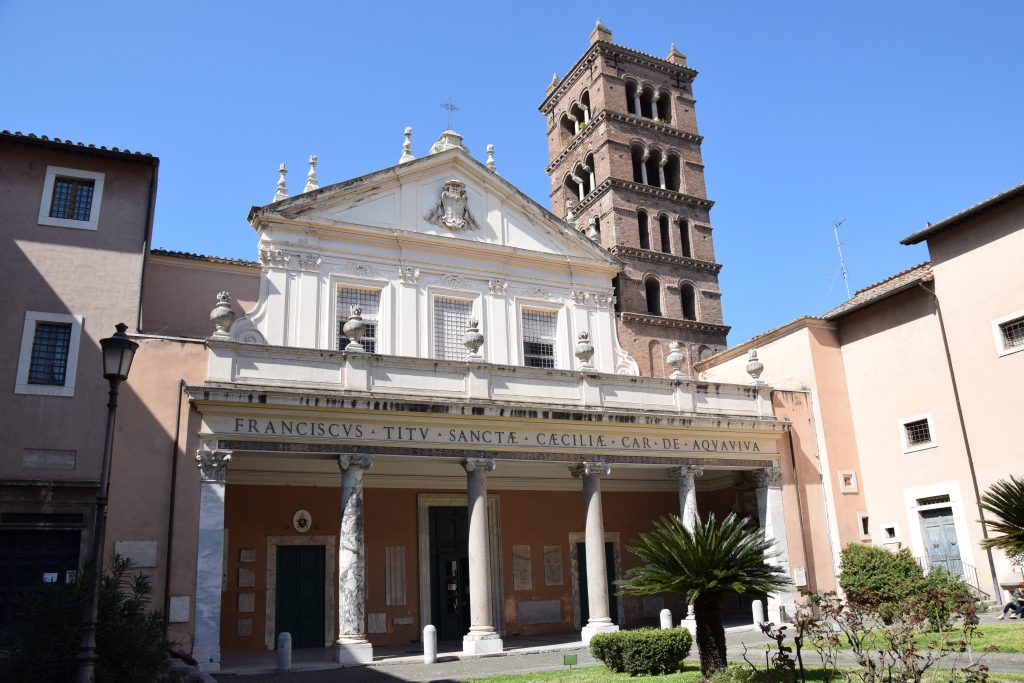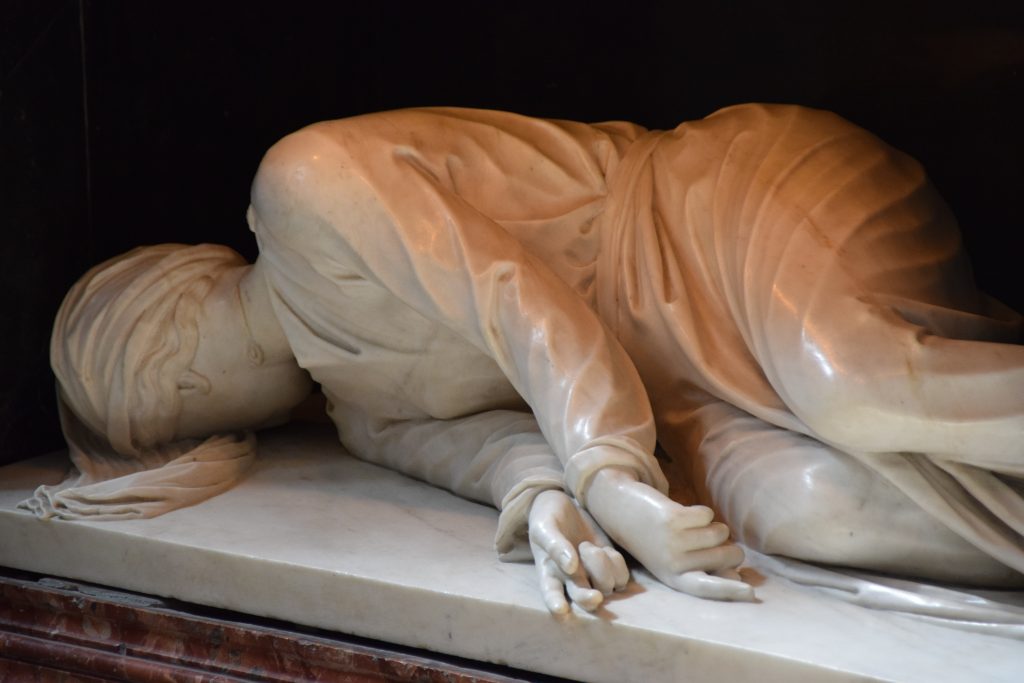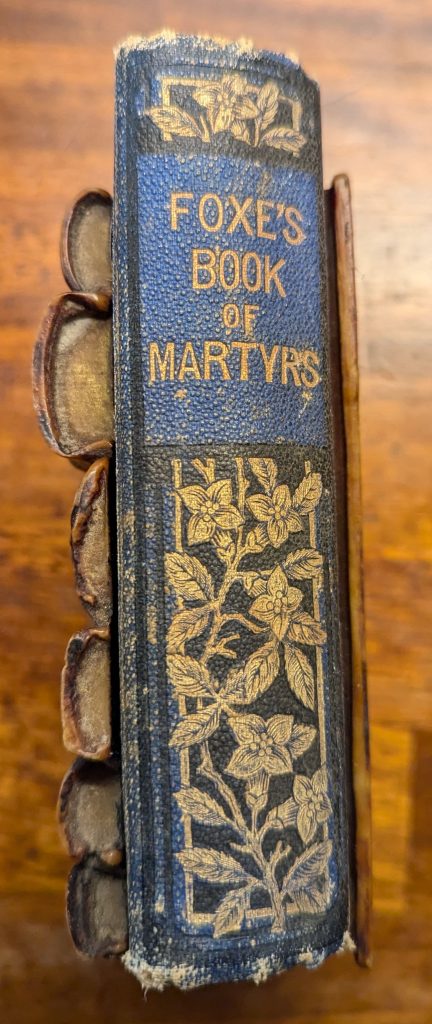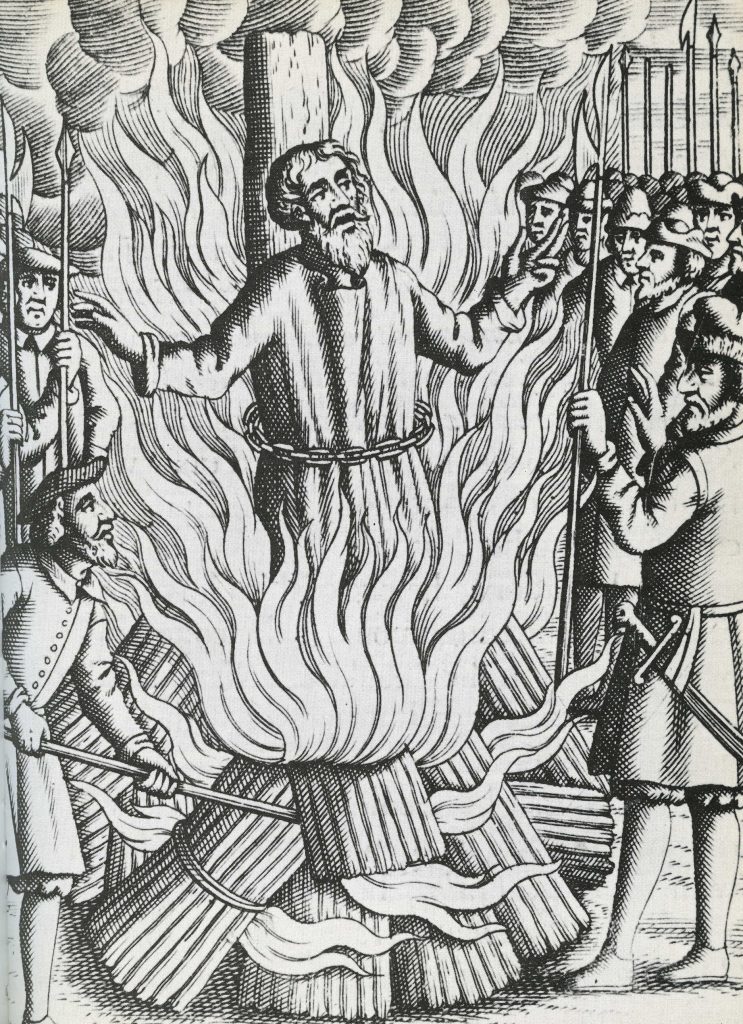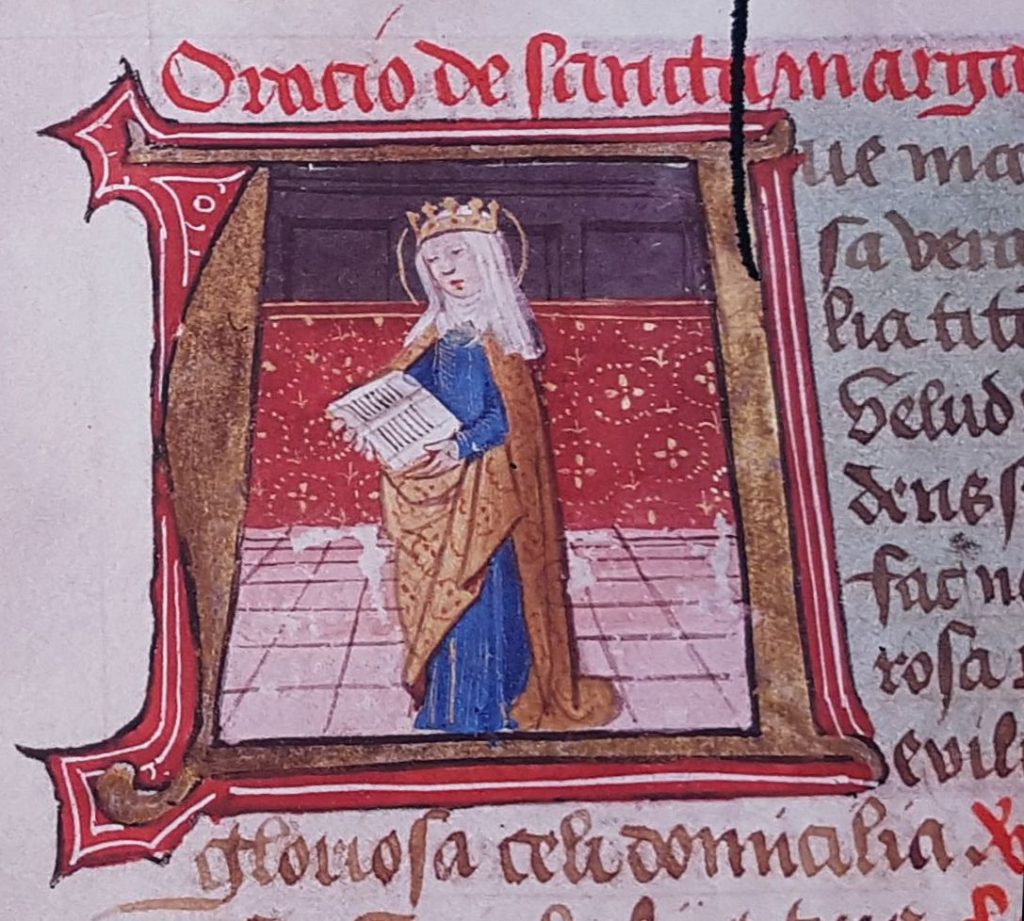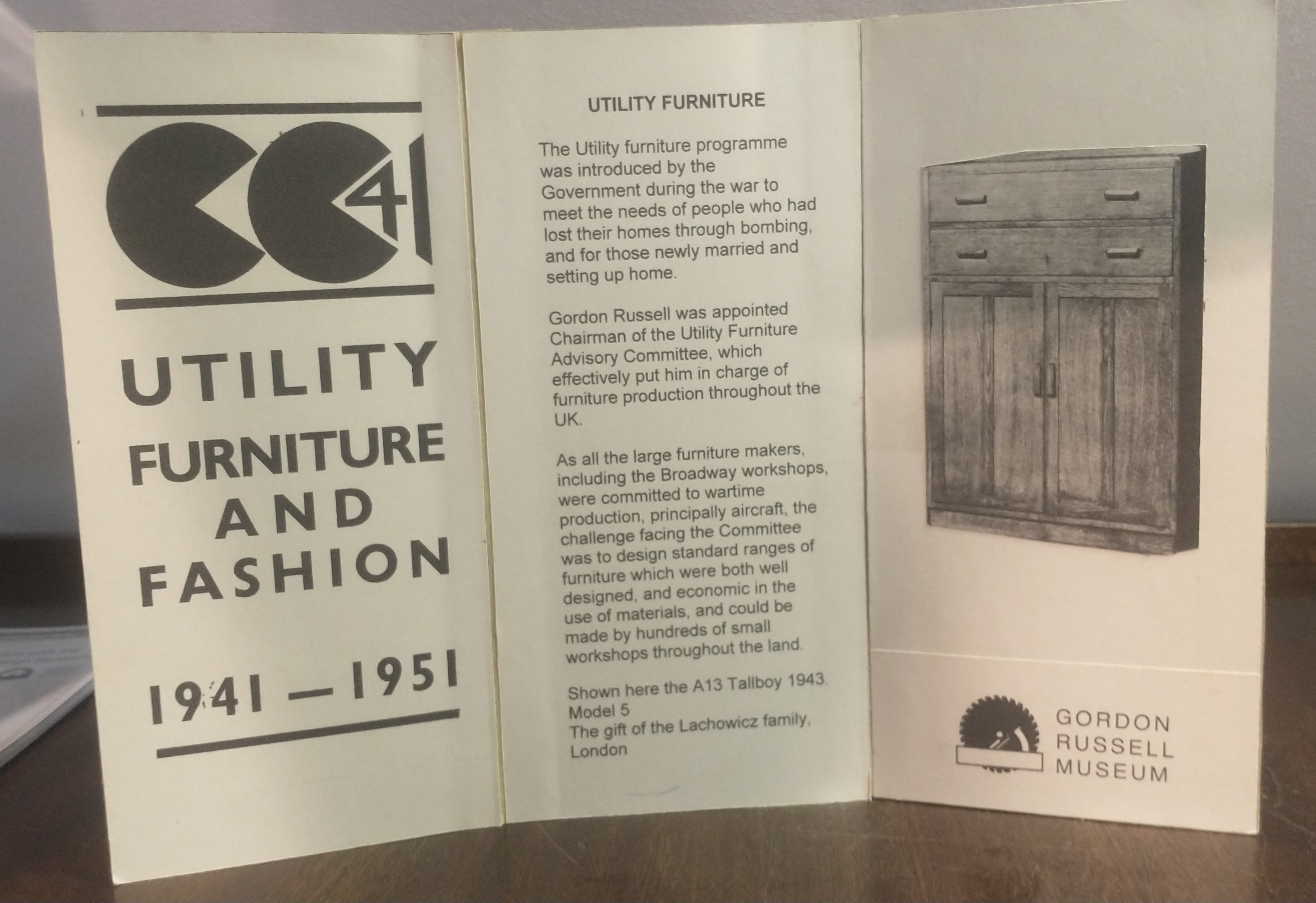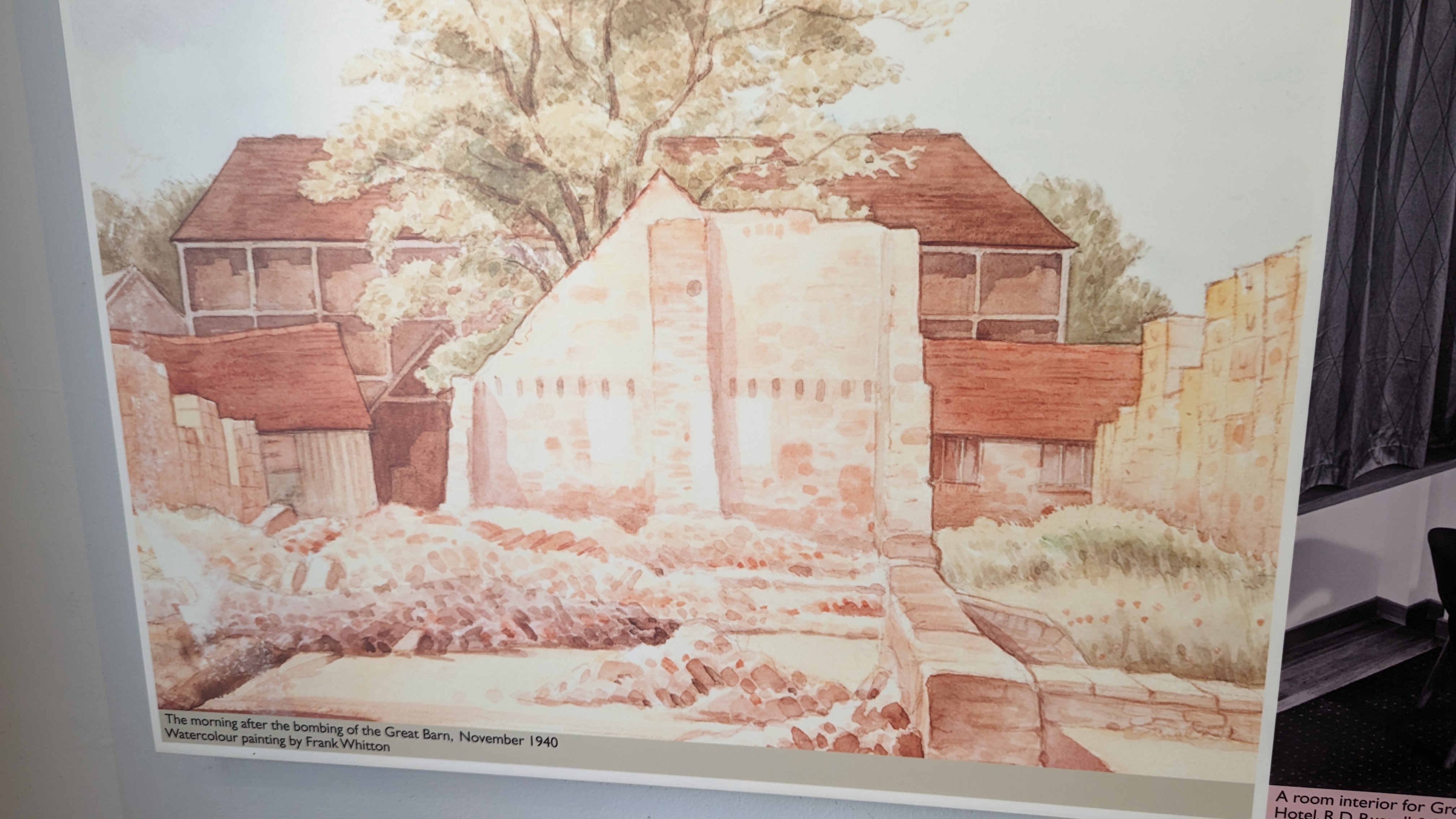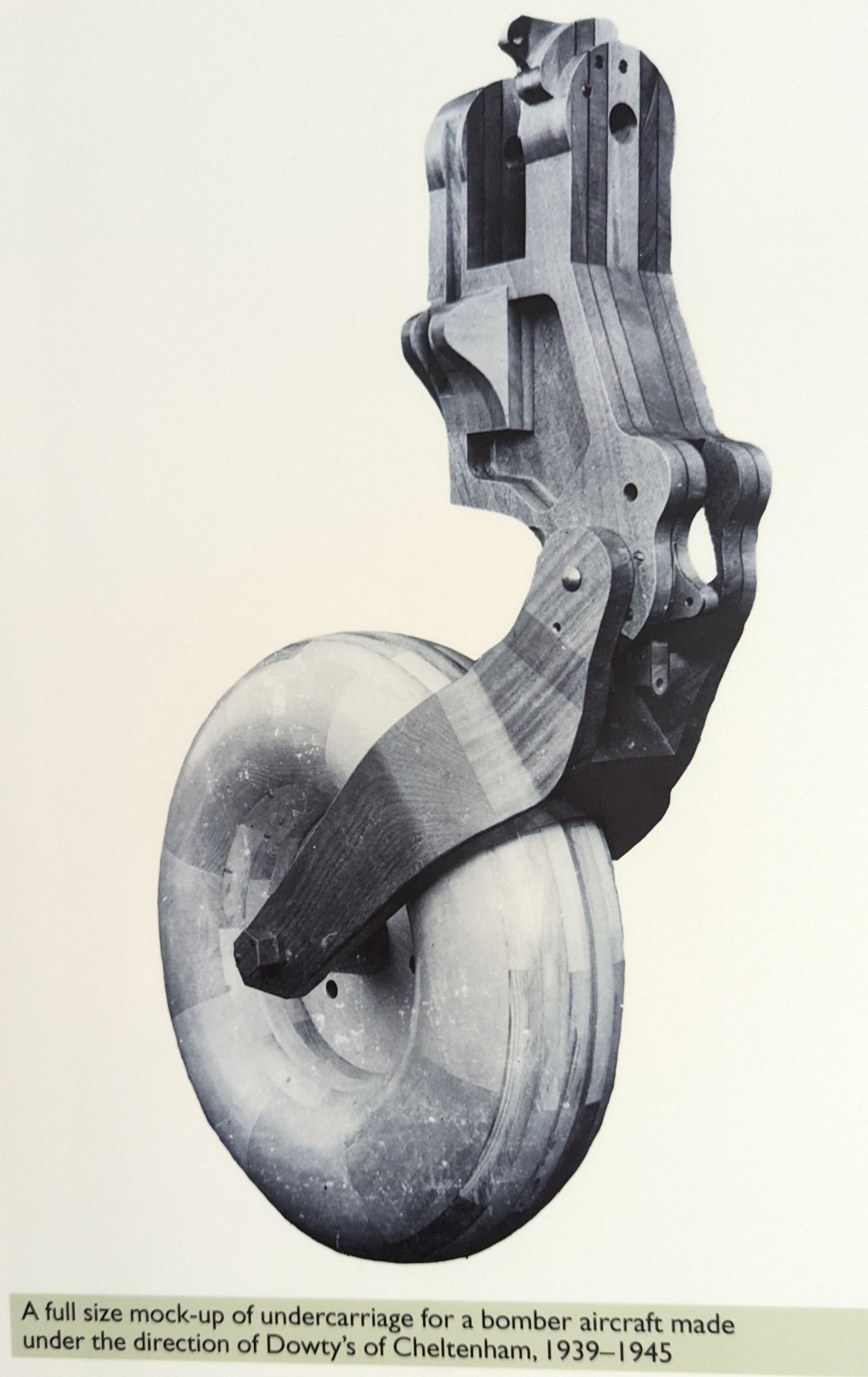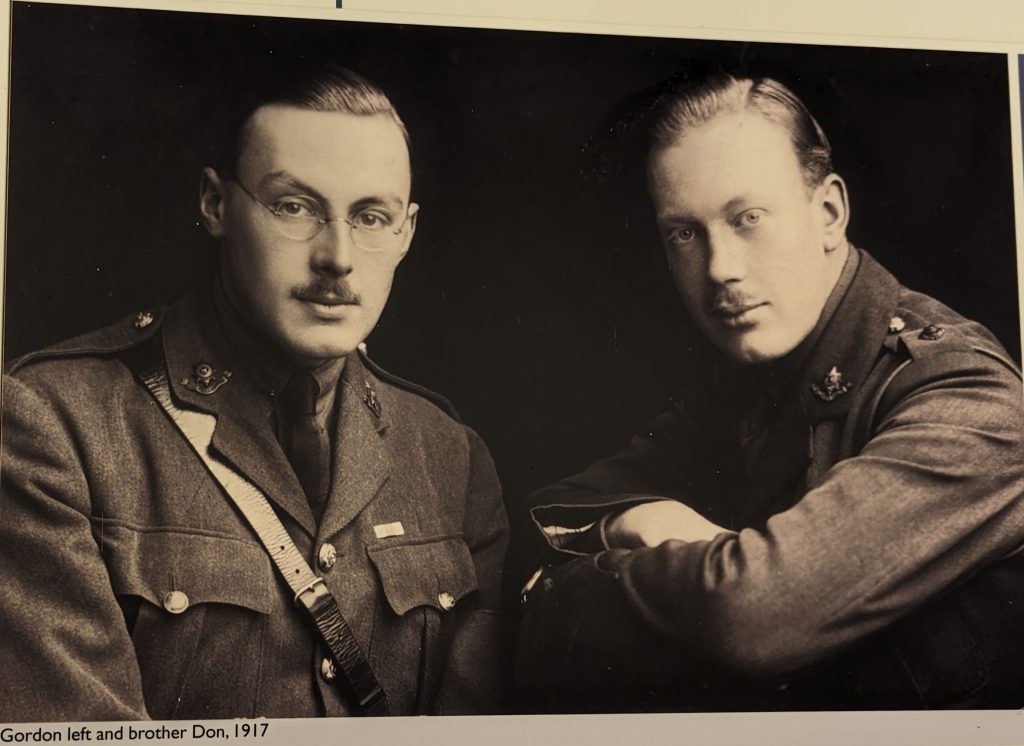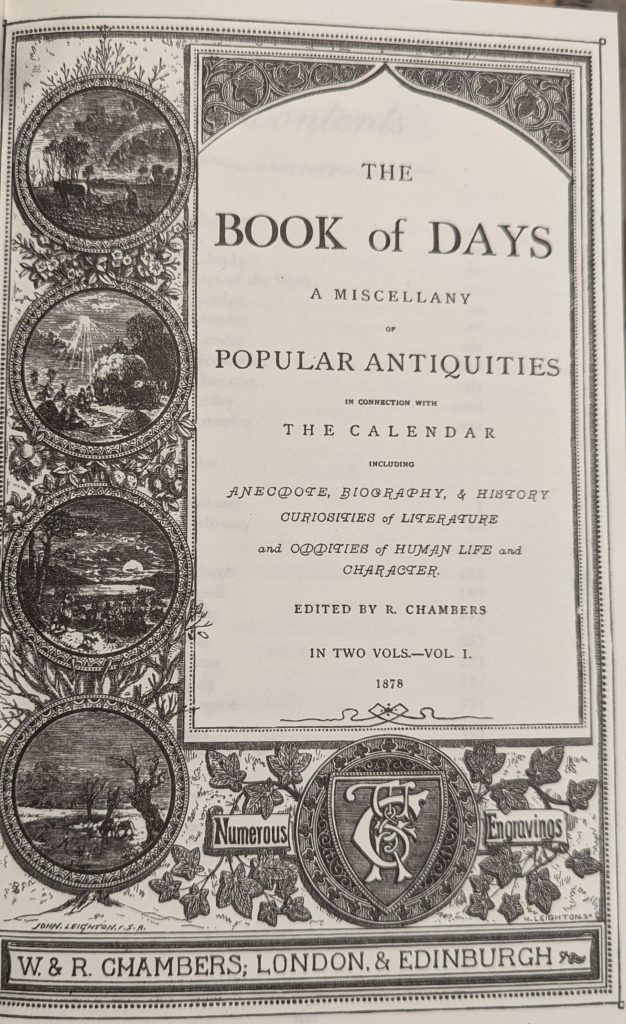
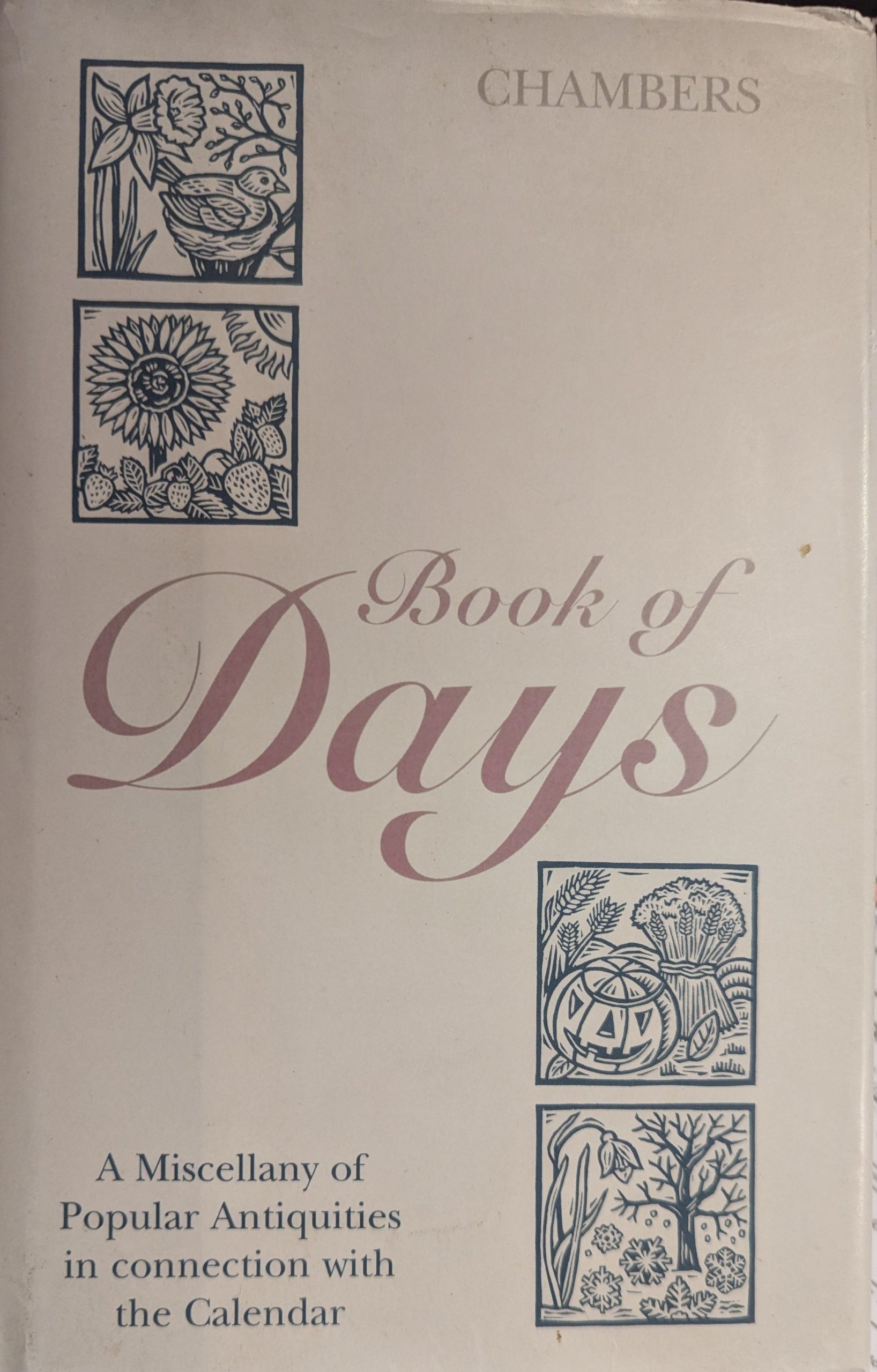
As you may have noticed, I am beginning to add a section called ‘On this Day’ which highlights some notable events that have happened on this day in history. I am doing this particularly when I am republishing a previously published post. Normally, the post is at least proofread better, but I try, if I have time, to improve it and sometimes expand it. Otherwise, I am trying to add the new ‘On this Day’ section. So if you find you have read the post before, just scroll down to the new content at the bottom.
My main source for the ‘On this Day’ section is Chambers’ ‘Book of Days A Miscellany of Popular Antiquities’in connection with the Calendar’. The original was published, in 1864, by Robert Chambers one of the original founders of Chambers Publishing. The new one takes is inspiration from the original. I found out about it from Sir Roy Strong and Julia Trevelyan Oman’s ‘The English Year, which is itself a personal selection from the Chambers Book of Days. Sir Roy was my boss when I was an Assistant Keeper at the V&A.
November 22nd is the dawning of Sagittarius.

According to the Kalendar of Shepherds 1604, women born on this day should marry at age 13, shall have many sons and live to 72 years old. Men born on November 22nd will be merciful, far-travelled, prosperous after early dangers and live to 72 years and 8 months.
Martinmas Old Style and Pack-Rag Day
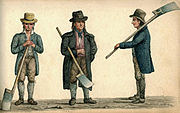
Martinmas was the Festival of Winter’s Beginning and is celebrated on November 11. It was one of the most famous medieval festivals. In 1752, the calendar was transformed when Britain transferred from the Julian to the Gregorian Calendar, 11 days were lost from the Calendar, so the original date of the festival would be what we know as November 22nd. So this is Martinmas Old Style.
In the East Riding of Yorkshire, hiring fairs were held around this time. It was also called Pack-Rag Day as servants carried their clothes to their new place of work.
A hiring fair is how Gabriel Oak is hired by Batheseba Everdene in ‘Far From the Madding Crowd’ by Thomas Hardy. They were often also held at Michaelmas, and in Warwickshire are called Mops. See my post on the Mop here.
On this Day we have two joyous events, and one terrible tragedy
1963 President Kennedy and Governor John Connally were shot while part of a motorcade in Dallas.
1968 The Beatles White Album was released
1990 British Prime Minister Mrs Thatcher resigned.
Originally published as two separated posts on 22nd November 2022, republished on 22nd November 2023, merged 2024, and expanded.

